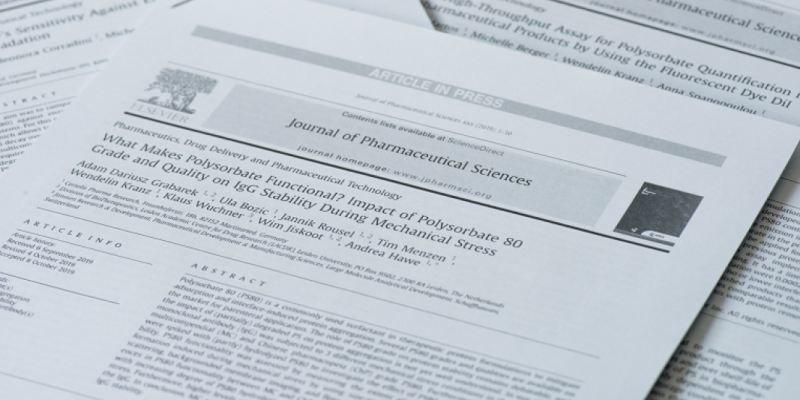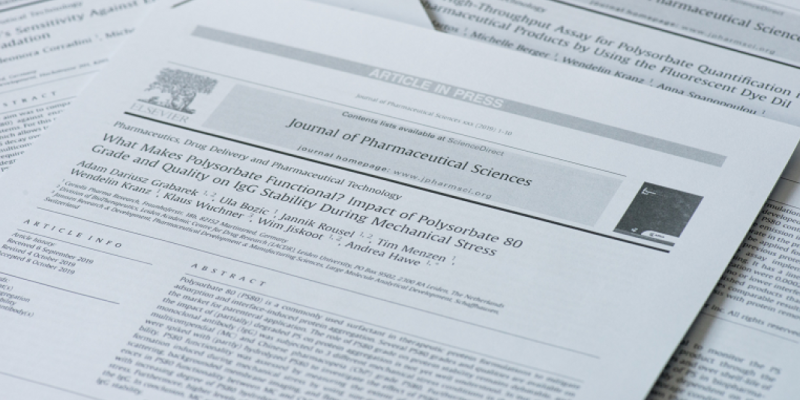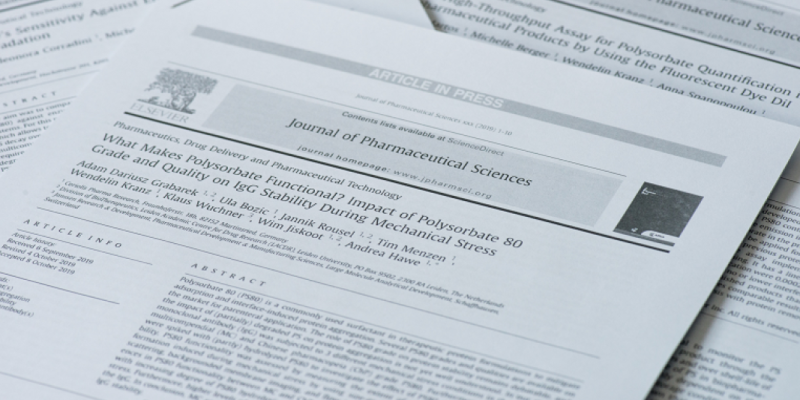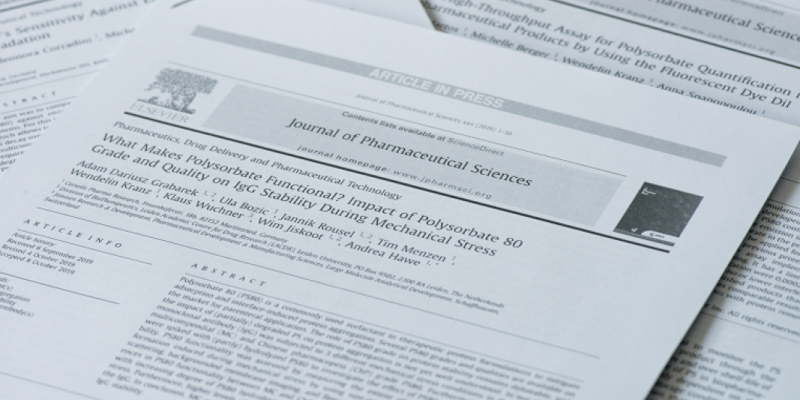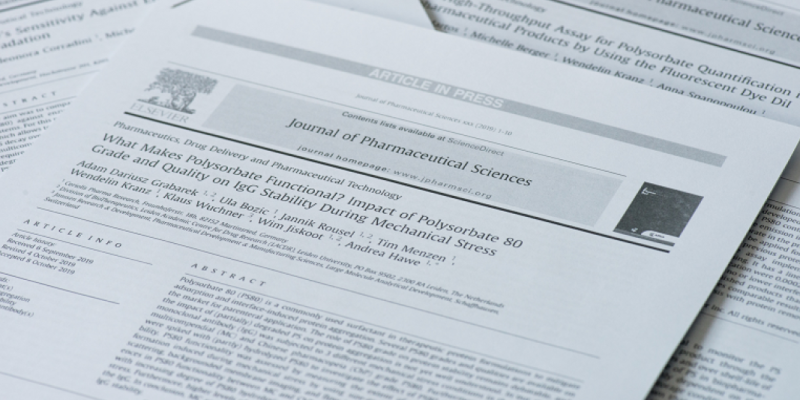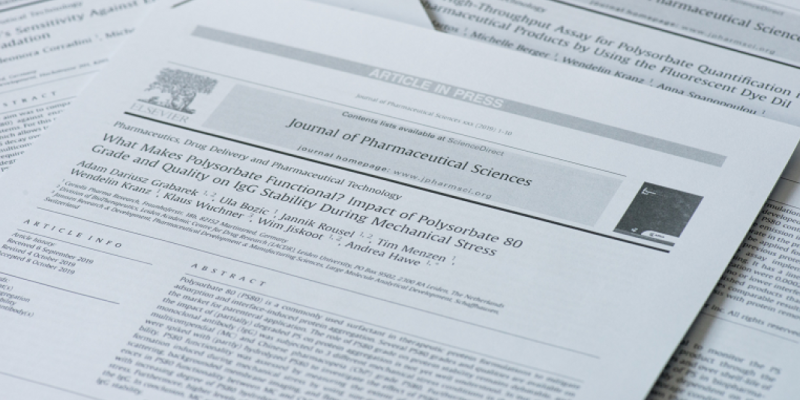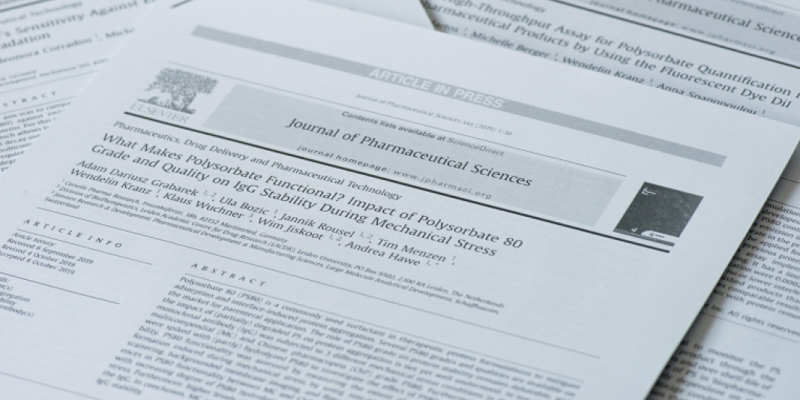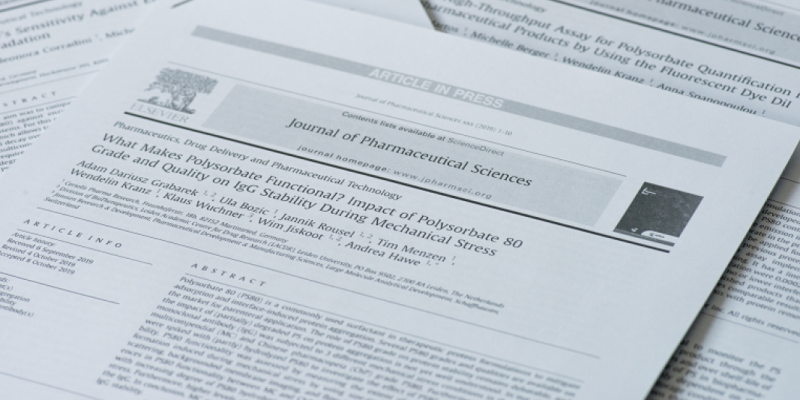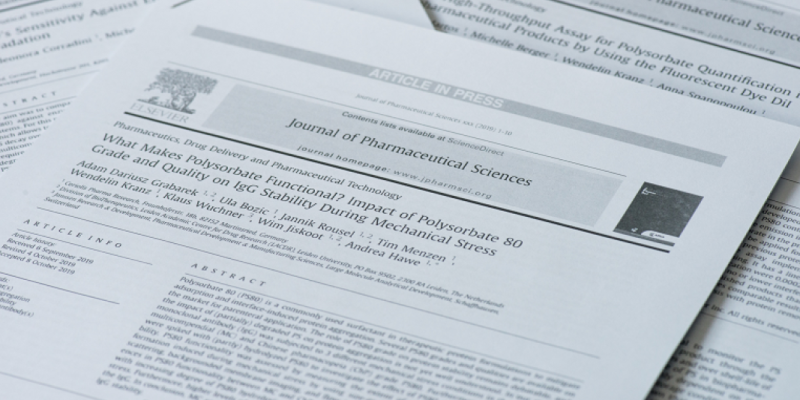IgG1 adsorption to siliconized glass vials-influence of pH, ionic strength, and nonionic surfactants
J Pharm Sci. 2015 Jan;104(1):34-43. doi: 10.1002/jps.24239. Epub 2014 Nov 12 (2015)
In this study, the adsorption of an IgG1 antibody to siliconized vials was investigated with focus on the formulation parameters pH, ionic strength, and nonionic surfactants. Electrophoretic mobility measurements were performed to investigate the charge characteristics of protein and siliconizedglass particles at different pH values. Calculation of the electrokinetic charge density allowed further insight into the energetic conditions in the protein-sorbent interface. Maximum adsorption of IgG1 was found at acidic pH values and could be correlated with energetically favorable minimal ion incorporation into the interface. The importance of electrostatic interactions for IgG1 adsorption at acidic pH values was also confirmed by the efficient adsorption reduction at decreased solution ionicstrength. A second adsorption maximum around the pI of the protein was assigned to hydrophobic interactions with the siliconized surface. Addition of the nonionic surfactants poloxamer 188 or polysorbate 80 resulted in almost complete suppression of adsorption at pH 7.2, and a strong but less efficient effect at pH 4 on siliconized glass vials. This adsorption suppression was much less pronounced on borosilicate glass vials. From these results, it can be concluded that electrostatic interactions contribute substantially to IgG1 adsorption to siliconized glass vials especially at acidic formulation pH.
© 2014 Wiley Periodicals, Inc. and the American Pharmacists Association.
J Pharm Sci. 2015 Jan;104(1):34-43. doi: 10.1002/jps.24239. Epub 2014 Nov 12 (2015)
http://www.ncbi.nlm.nih.gov/pubmed/?term=IgG1%20adsorption%20to%20siliconized%2…


